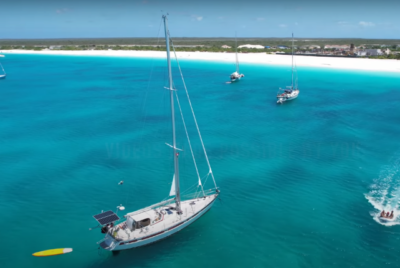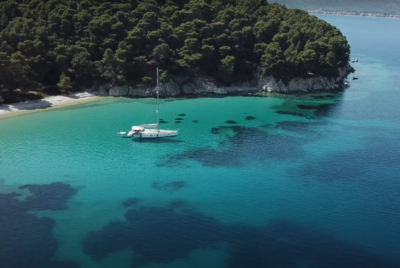Snipe Sailing Boat: A Thrilling Adventure on the Waters
Ahoy there, fellow sailing enthusiasts! If you’re ready to embark on an exhilarating journey across the waters, look no further than the Snipe sailing boat. In this article, I’ll guide you through the captivating world of Snipe sailing, offering insights, recommendations, and a sprinkle of personal experience to make your sailing ventures unforgettable.
Introduction to Snipe Sailing
Sailing, for many, is not just a hobby but a passion that transcends the mundane. The Snipe sailing boat, born out of this passion, has been capturing the hearts of sailors since its inception. Let’s delve into the basics of what makes Snipe sailing a unique and thrilling experience.
History and Origin
Snipe Sailing Boat Design
The devil is in the details, they say. In the case of Snipe sailing, the design of the boat plays a crucial role in its performance. Let’s break down the anatomy of a Snipe sailing boat, exploring its design elements and how they contribute to an unmatched sailing experience.
Choosing the Right Snipe Boat
Not all Snipe boats are created equal. Choosing the right one for your sailing adventures involves considering various factors. From size to material, I’ll navigate through the key aspects that will help you make an informed decision.
Choosing the right Snipe boat is a crucial decision that involves considering various factors to ensure a good fit for your sailing preferences and skill level. Here is a guide on how to select the right Snipe boat:
Determine Your Skill Level:
- Consider your sailing experience and skill level. If you are a beginner, you may want a boat that is forgiving and easy to handle. Experienced sailors may prefer a high-performance option.
New or Used:
- Decide whether you want to purchase a new or used Snipe boat. New boats offer the latest design features, while used boats can be more budget-friendly. Carefully inspect used boats for any signs of damage or wear.
Budget Considerations:
- Establish a budget for your Snipe boat purchase. This should include not only the cost of the boat but also any additional equipment, maintenance, and potential upgrades.
One-Design Class Compliance:
- Ensure that the Snipe boat you are considering complies with the one-design class rules. The strict one-design nature of the Snipe class means that all boats should be essentially identical, focusing on skill rather than boat performance.
Check the Hull and Rigging:
- Inspect the hull for any signs of damage, delamination, or repairs. Check the rigging, including the mast, boom, and standing rigging, for wear and tear. A well-maintained hull and rigging contribute to the boat’s overall performance and safety.
Sails and Equipment:
- Assess the condition of the sails. If the boat comes with multiple sets, evaluate their condition and choose the set that aligns with your sailing needs. Check the boat’s equipment, including the rudder, centerboard, and any additional gear that may be included.
Sail Number and Measurement Certificate:
- Verify that the boat has a valid measurement certificate issued by the International Snipe Class Association (ISCA). The sail number should match the certificate. This ensures that the boat meets class standards.
Test Sail:
- Whenever possible, take the boat for a test sail. This allows you to assess how it handles on the water and whether it meets your expectations in terms of performance and comfort.
Research the Boat’s History:
- If purchasing a used boat, inquire about its history. Know how many owners it has had, any significant races or events it has participated in, and if it has undergone any major repairs or modifications.
Consult with Snipe Class Experts:
- Seek advice from experienced Snipe sailors or class experts. They can provide valuable insights into the specific characteristics of different boats and help you make an informed decision.
By carefully considering these factors, you can choose a Snipe boat that aligns with your sailing goals and provides an enjoyable and competitive experience on the water.
Essential Gear and Equipment
Setting sail without the proper gear is like embarking on a quest without a map. We’ll discuss the essential gear and equipment every Snipe sailor should have on board, ensuring a safe and enjoyable journey.
Sails:
Mainsail and Jib
These are the primary sails for the Snipe. Ensure they are in good condition, without excessive wear or damage. It’s common for sailors to have multiple sets of sails for different wind conditions.
Mast and Rigging:
Mast
Check the mast for any signs of damage or corrosion. Ensure the rigging, including shrouds and forestay, is secure and properly tensioned.
Centerboard and Rudder:
Centerboard
Ensure the centerboard is functioning properly and is free of any damage. It should move smoothly within the trunk.
Rudder
Check the rudder for wear and ensure that it moves freely. Confirm that the tiller and extension are in good condition.
Lines and Sheets:
Halyards and Sheets
Inspect all lines for fraying or wear. Halyards raise and lower the sails, while sheets control sail trim. Make sure they run smoothly through blocks and are properly secured.
Buoyancy Bags:
Buoyancy Bags or Bags
These inflatable bags are placed inside the hull to provide buoyancy in case of a capsize. They contribute to the self-rescue ability of the boat.
PFDs (Personal Flotation Devices):
A Coast Guard-approved life jacket must be worn by each person on board. Ensure they are in good condition and properly sized for all crew members.
Safety Equipment:
Essential for signaling on the water.
A throwable rescue line that can be used in case of emergencies.
Basic medical supplies for addressing minor injuries.
Bailers and Sponge:
Bailers
Used to remove water from the hull.
Sponge
Handy for absorbing any remaining water and keeping the boat dry.
Trapeze Harness
For advanced sailing techniques, a trapeze harness allows the crew to extend their body over the side of the boat to counterbalance the heeling effect.
Tiller Extension
A longer extension allows the helmsman to steer comfortably while hiking out.
Tool Kit
A basic tool kit with wrenches, screwdrivers, and spare parts for quick repairs on the water.
Boat Cover
A cover protects the boat when it’s not in use, preventing exposure to the elements.
A trailer for transporting the boat and a launching dolly for easy movement on land.
Racing Compass
For competitive racing, a compass with a mount on the deck provides navigation assistance and helps with strategic decisions.
Wind Indicator
A device to help sailors gauge wind direction, crucial for sail trim and tactical decisions.
Before each sailing session, conduct a thorough check of all equipment to ensure everything is in working order. Regular maintenance and prompt replacement of worn or damaged items contribute to a safer and more enjoyable Snipe sailing experience.
Snipe Sailing Techniques
Sailing is an art, and mastering the techniques can turn a good sailor into a great one. Learn the ropes (quite literally!) of Snipe sailing techniques, from tacking to jibing, and discover how to harness the wind for an effortless glide.
Maintenance Tips
Like any vessel, Snipe boats require care and attention. I’ll share some practical maintenance tips to keep your Snipe sailing boat in top-notch condition, ensuring longevity and optimal performance.
Popular Snipe Sailing Destinations
The world is your oyster when you’re sailing on a Snipe boat. Explore some of the most breathtaking and popular Snipe sailing destinations worldwide, each offering a unique blend of challenges and scenic beauty.
Snipe sailing is enjoyed by enthusiasts around the world, and there are numerous popular destinations where Snipe sailors gather for competitions and recreational sailing. Some of the most well-known and beloved Snipe sailing destinations include:
San Diego, California, USA
San Diego holds historical significance as the birthplace of the Snipe class. The area boasts a strong Snipe sailing community, and the picturesque waters of San Diego Bay provide an excellent venue for both local and international events.
Rio de Janeiro, Brazil
Brazil has a thriving Snipe sailing scene, and Rio de Janeiro is a hotspot for Snipe regattas. The challenging conditions of Guanabara Bay make it a favorite destination for competitive sailors.
Riviera Nayarit, Mexico
With its beautiful beaches and favorable sailing conditions, Riviera Nayarit in Mexico is a popular destination for Snipe sailors. The area hosts various regattas that attract participants from Mexico and beyond.
Lagos, Portugal
The Algarve region, particularly around Lagos, is known for its stunning coastline and reliable winds, making it a favorite among Snipe sailors. Portugal has hosted several Snipe World Championships.
Barcelona, Spain
Barcelona, with its rich maritime history, is a popular destination for Snipe sailors. The Mediterranean waters around Barcelona offer diverse conditions for both recreational sailing and competitive events.
Lake Garda, Italy
Lake Garda, located in the Italian Alps, is renowned for its consistent and strong winds. The lake often hosts international Snipe regattas, attracting sailors from all over Europe and beyond.
Cienfuegos, Cuba
Cienfuegos, situated on Cuba’s southern coast, is a rising star in the Snipe sailing world. The warm waters of the Caribbean and the enthusiasm of the local sailing community make it an inviting destination.
Tokyo Bay, Japan
With the inclusion of sailing in the Olympic Games, Tokyo Bay gained prominence as a sailing destination. It has become a hub for various sailing classes, including Snipe events.
Buenos Aires, Argentina
Argentina has a strong tradition in Snipe sailing, and Buenos Aires is a focal point for regattas and championships. The challenging conditions of the Rio de la Plata add excitement to the sailing experience.
Lake Eustis, Florida, USA
Lake Eustis in Florida is a popular destination for Snipe sailors in the United States. The lake hosts regional and national Snipe events, attracting participants from across the country.
These destinations offer a mix of stunning natural surroundings, diverse sailing conditions, and vibrant sailing communities, making them appealing for Snipe sailors seeking both competitive racing and recreational sailing experiences.
Racing in Snipe Class
For the competitive souls out there, Snipe sailing offers a vibrant racing scene. Discover the thrill of racing in Snipe class events, where tactics, skill, and a bit of adrenaline come together for an unforgettable experience.
Challenges and How to Overcome Them
Smooth sailing isn’t always guaranteed. Explore the challenges that Snipe sailors may face and gain valuable insights on overcoming these hurdles, turning them into opportunities for growth and skill enhancement.
Community and Events
Sailing is not just a solitary activity—it’s a community. Discover the vibrant Snipe sailing community and explore the events that bring like-minded sailors together, fostering camaraderie and shared passion.
Snipe Sailing Etiquette
Every community has its own set of unwritten rules. Delve into the etiquette of Snipe sailing, ensuring you navigate the waters with respect for fellow sailors and the environment.
Conclusion
In conclusion, Snipe sailing isn’t just a sport—it’s a way of life. As you embark on your own Snipe sailing journey, may the winds be ever in your favor. Happy sailing!
FAQs
Is Snipe sailing suitable for beginners?
Absolutely! Snipe sailing is welcoming to beginners, and many sailing schools offer courses to get you started.
How do I choose the right Snipe boat size?
Consider factors like your sailing experience, crew size, and the type of waters you’ll be navigating. Consult with experienced sailors for personalized advice.
Are there Snipe sailing events for families?
Yes, many Snipe sailing events are family-friendly, creating an enjoyable experience for sailors of all ages.
What’s the typical lifespan of a Snipe sailing boat?
With proper maintenance, a Snipe boat can last for many years, providing countless hours of sailing enjoyment.
Can I participate in Snipe sailing races as a solo sailor?
While it’s more common to sail with a crew, some events may allow solo participants. Check the specific rules of the racing event you’re interested in.
















